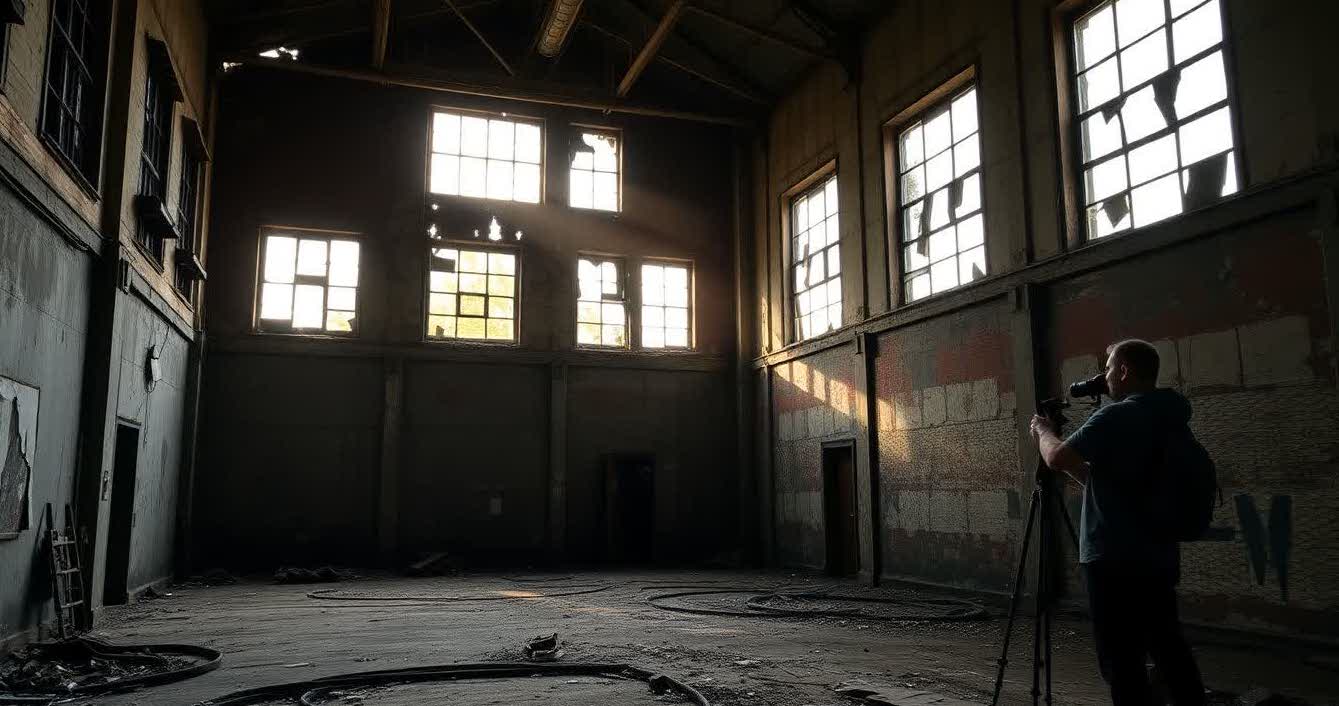June 13, 2025

Urban exploration photography (commonly referred to as "urbex") is an immersive and visually captivating genre of photography. It focuses on capturing abandoned places, forgotten buildings, and decaying structures in both urban and rural settings. Urbex photography not only showcases the passage of time but also uncovers the beauty in decay, presenting a contrast between human history and nature's reclamation.
Whether you're an experienced photographer or just starting, mastering urbex photography involves a blend of creativity, technical knowledge, and respect for your surroundings. Let’s explore the key components of capturing these stunning scenes.
Urban exploration photography is a sub-genre of documentary and architectural photography, specifically focusing on derelict, decaying, or abandoned places. These locations often include old factories, hospitals, warehouses, schools, and even tunnels and caves—places that were once bustling with life but are now quiet and forgotten.
Unlike traditional photography, urbex requires a unique perspective: capturing the beauty of decay while telling the story of how time and nature have transformed these forgotten spaces.
Related: What is Artistic Photography?
Urban exploration photography often takes place in challenging environments, such as dark, cramped, and potentially unstable locations. Having the right gear is critical for ensuring that your shots are clear, sharp, and safe.
1. Camera & Lenses : The right camera and lenses will help you adapt to low-light environments, tight spaces, and complex compositions.
Related Gear Guides:
2. Tripod : In the dimly lit, often dark environments of abandoned places, a tripod is essential for capturing long exposures and ensuring sharpness. A sturdy, lightweight tripod like the Peak Design Travel Tripod or Manfrotto BeFree will allow you to shoot at slow shutter speeds without camera shake.
Best Tripods for Travel and Studio Photography
3. Lighting Equipment : While urban exploration photography often involves low-light conditions, you’ll still need to ensure sufficient illumination to bring out key details.
Related: Photography Artificial Lighting Guide
Safety is paramount when it comes to urban exploration. Many urbex sites are not only off-limits but also hazardous. Here’s a checklist of safety and legal tips for urbex photographers:
Related: Common Mistakes in Photography and How to Avoid Them
Urban exploration photography thrives on capturing the eerie beauty of abandonment. Composition plays a key role in showcasing the decay, atmosphere, and mood of these locations.
1. Emphasize Texture & Decay : Textures in abandoned buildings—peeling paint, rusted metal, shattered glass—are often the heart of urbex photography. Use close-up or macro shots to emphasize these elements, turning decaying surfaces into works of art.
Related: How to Capture Texture in Macro Photography
2. Play with Light & Shadow : Natural light streaming through broken windows, skylights, or cracks in the roof can add a dramatic effect to your photos. Use light and shadow to emphasize the form and mood of the scene. Play with silhouettes, beams of light, and pools of shadow to create cinematic compositions.
Related: How to Use Natural Light for Stunning Photos
3. Use Leading Lines & Symmetry : Abandoned buildings are often filled with leading lines (hallways, staircases, pipes) and symmetrical elements. Use these to guide the viewer’s eye through the composition and create a sense of balance and order amidst chaos.
Related: What Are Leading Lines in Photography?
4. Add Human Elements : Including a human element—whether a model or a silhouette—can add a layer of storytelling to your shots. A person in a forgotten space gives scale to the scene and evokes a sense of isolation or mystery.
Related: How to Photograph Dancers in Motion
Post-processing is an essential part of urban exploration photography, allowing you to enhance the eerie and dramatic atmosphere of your shots.
Bonus Read: How to Take Professional-Looking Photos
If you’re looking to turn your passion for urbex photography into a source of income, here are a few ways to monetize your work:
Urban exploration photography offers a unique opportunity to document history, architecture, and decay through your lens. With the right gear, safety protocols, and artistic composition, you can capture stunning, evocative images that tell stories of forgotten places.
Happy exploring and photographing!
Stay up to date with the newest tips, gear reviews, and step-by-step guides to elevate your photography journey from home and beyond.